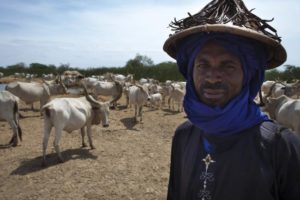On August 28, 2018 in Nairobi, Kenya, the success of large-scale restoration of landscapes that have been burdened by natural or man-made disasters was showcased by UN Environment when they launched their new report: Restoring forests and landscapes, the key to sustainable future.
This unprecedented study chronicles the results of long-term and large-scale research and outlines several case studies in forest and landscape restoration. The report bears a positive message, presenting a variety of time-proven opportunities to bring unfertile land back to life.
 “It’s clear that there is a growing movement for large-scale landscape restoration,” Erik Solheim, head of UN Environment said. “All our international partner organizations working in this field agree it’s now time to significantly scale up this work. There is clear potential for an area of 350 million hectares of degraded land to be restored by 2030, something that give a huge boost to the fight against climate change, biodiversity loss and poverty. It’s essential that we mobilize and seize this opportunity.”
“It’s clear that there is a growing movement for large-scale landscape restoration,” Erik Solheim, head of UN Environment said. “All our international partner organizations working in this field agree it’s now time to significantly scale up this work. There is clear potential for an area of 350 million hectares of degraded land to be restored by 2030, something that give a huge boost to the fight against climate change, biodiversity loss and poverty. It’s essential that we mobilize and seize this opportunity.”
With wildfires, droughts and the steadily increasing number of migrants driven from their homes by land degradation, food insecurity or conflict over natural resources dominating the news, the report comes at a pivotal moment.
Securing enough healthy and fertile landscapes are key to address these pressing challenges. With 40% of global soil cover already being used for agricultural purposes, room for expansion is limited. Every year, we are losing ecosystem services – including food production – worth more than $6 trillion a year to erosion and other forms of degradation.
Nations around the world recognize the economic benefits that investing in restoration brings, and while the threats posed by degradation are daunting, our growing understanding of how natural systems work present enormous opportunities for positive change.
 As of 2018, almost 50 countries, including India, Kenya, Ethiopia, Mexico, and Peru have already committed to bringing more than 160 million hectares – the size of the Indian subcontinent – into restoration by signing on to the world’s largest restoration initiative – the Bonn Challenge.
As of 2018, almost 50 countries, including India, Kenya, Ethiopia, Mexico, and Peru have already committed to bringing more than 160 million hectares – the size of the Indian subcontinent – into restoration by signing on to the world’s largest restoration initiative – the Bonn Challenge.
“Forest and landscape restoration is clearly an idea whose time has come. After testing the approach successfully in over 50 countries, we are now ready to scale up. A global ecosystem restoration movement is our best hope to limit climate change, create green jobs, and improve food and water security at the same time. We are ready to work with all stakeholders who want to join us on this journey,” said Tim Christophersen, Chair of the Global Partnership on Forest and Landscape Restoration, a platform of 29 international organizations and Governments who issued the report.
About UN Environment
UN Environment is the leading global voice on the global environment. It provides leadership and encourages partnership in caring for the environment by inspiring, informing, and enabling nations and peoples to improve their quality of life without compromising that of future generations. UN Environment works with governments, the private sector, the civil society and with other UN entities and international organizations across the world.
About the Global Partnership on Forest and Landscape Restoration
The Global Partnership on Forest and Landscape Restoration (GPFLR) is a proactive global network that unites governments, organizations, academic/research institutes, communities and individuals under a common goal: to restore the world’s lost and degraded forests and their surrounding landscapes. The GPFLR responds directly to the Bonn Challenge to restore 150 million hectares of deforested and degraded land by 2020 and 350 million hectares by 2030. www.forestlandscaperestoration.org
Photos courtesy of UN Environment.

